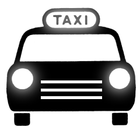Shanghai Street View: Taxi Tales 沪经动向:打车的故事
 Everyone has their own favorite tales about taking taxis in China, and I’m certainly no different from the rest. Some tales are funny and involve colorful cab drivers, but more often the talk these days involves frustration at hailing a taxi in major Chinese cities, especially during peak hours. Now the Chinese Academy of Social Sciences has done a formal survey of major cities on taxi satisfaction, and not surprisingly Shanghai ranks near the top of the list for its relatively reliable service.
Everyone has their own favorite tales about taking taxis in China, and I’m certainly no different from the rest. Some tales are funny and involve colorful cab drivers, but more often the talk these days involves frustration at hailing a taxi in major Chinese cities, especially during peak hours. Now the Chinese Academy of Social Sciences has done a formal survey of major cities on taxi satisfaction, and not surprisingly Shanghai ranks near the top of the list for its relatively reliable service.
Before I start with my own taxi tales and assessments, let’s take a look at this more scientific survey, which asked 25,000 people in 38 major Chinese cities for their thoughts on their local taxi service. (Chinese article) According to the results, Shanghai was the third easiest city to hail a taxi, behind only the Tibetan capital of Lhasa and the eastern coastal city of Tianjin. Not surprisingly, Beijing ranked near the bottom of the list, coming in at number 28.
Some 8.5 percent of overall respondents said it was very hard to hail a taxi, and that they often had to wait 30 minutes or more to get a cab. Only 11.6 percent said they could usually get a cab within 5 minutes. Now that we’ve looked at the scientific results, I’ll follow with my own unscientific analysis of the situation on why Shanghai has been relatively effective at providing good taxi service even as major cities like Beijing have done a much worse job.
Most importantly, Shanghai has developed a very good public transport system with its efficient, state-of-the-art subway as its centerpiece. That means everyone always has a good public transport option for getting from one place to another if they’re not in a really big hurry. Equally important, Shanghai’s taxi fare structure is one of the closest in China to western-style systems where people pay significantly more for the privilege of taking a taxi. That contrasts sharply with other cities, where taxi fares are often quite low due to government restrictions designed to keep prices affordable.
A perfect example are taxi fares to Shanghai’s 2 major airports, which typically cost me anywhere from 100-200 yuan each time. By comparison, I can travel from Beijing’s main airport to most parts of the city for less than 100 yuan. In smaller cities, the fares are even lower. Obviously I like to get low taxi fares just like everyone else. But when fares are too low, it encourages too many people to use taxis as a regular form or transport, rather than an occasional option when someone is in a real hurry. That not only leads to difficulty hailing a taxi on the road, but also creates more congestion because taxi drivers have more incentive to work longer hours to earn more money.
Me and many of my Shanghai friends are particularly glum whenever we have to travel to Beijing, where waiting for a taxi often takes more than 10 minutes during most times and involves tussling with other people also looking for a cab. During peak times most people won’t even bother to try to find a taxi in Beijing because it’s largely impossible. What’s worse, the definition of peak hours seems to always be expanding, with the result that it’s largely impossible to get a taxi in Beijing often as late as 11 a.m. or noon, and it also becomes very difficult starting as early as 3 or 4 in the afternoon.
By comparison, Shanghai taxis are relatively easy to find at nearly any time except for during the morning peak rush from 8 to 9 a.m., and in the afternoon from 6 to around 7:30 p.m. In Shanghai taxi drivers also rarely refuse to take a passenger, which is sometimes a problem in other cities where drivers don’t want to deal with the heavy traffic and long driving times to go to some areas.
I certainly won’t say that Shanghai is perfect, and I do find a number of annoying things about taxi service in the city, including the video screens in the passenger seat that drivers turn on as soon as you get into their cab and then play the same commercials again and again for the duration of your trip. Then there’s the farce of the automated voice that reminds you to fasten your seat belt when you get in the cab, even though such seat belts are non-existent in most taxis.
But despite these foibles, I really do think that Shanghai should be proud of its high ranking in this latest taxi satisfaction survey, which reflects the very real fact that the city is using a potent combination of market forces and good public transport alternatives to deliver an effective and affordable taxi system.
